Both the artwork and the video recording above are reflections based upon my memories of a now vanished forest which once stood near the home of my aunt, uncle and cousins. The present views of this area are captured via Google Earth and show the relative development of highways, neighborhoods, asphalt streets and concrete bridges, all expected elements of urban modernization (or "progress"). You would not ever know today what once was there if you had never seen the forest which enveloped this area back in the 1950's and 1960's. Perhaps this kind of development is symptomatic of many areas due to population density and the necessity of arterial roadways to alleviate traffic congestion. But it is a sad loss to those of us who love the green belt areas and hold fond memories of this particularly lovely woodland retreat. On my You Tube channel I have posted a series of accordion improvisations entitled "Baltusrol Impressions" which further explores my memories and reflections of this now vanished forest.
|
An improvisation based upon childhood memories of playing with my cousins Sharon and Kerry in Springfield, New Jersey at the western edge of Baltusrol Avenue where once there was a large forest with rocks, a stream and a stone bridge. Although my family did not live in Springfield, we often visited there allowing Sharon and Kerry to show me so many of the local attractions and scenery. I once stayed at my aunt and uncle"s house for a week affording plenty of time to explore the forested area adjacent to the neighborhood. My dad and I helped to extend Sharon and Kerry's house toward the back with a new kitchen and renovated dining room. So we were there for many weekends both working and relaxing. My cousins invited me to attend the Strawberry Festival in the springtime, held at Jonathon Dayton High School. We also saw the fireworks display in July and attended birthday parties, anniversaries and outdoor picnics at the Baltusrol Avenue address. In the years from 1955 to 1965 I came to love the forested area, the rock formations and the lyrical stream which meandered through the forest realms just a short walk from my relative's home. Sometime around the late 1960's or early 1970's this area changed drastically with the introduction of a new highway system which obliterated the forest and permanently altered the landscape which we as children had so dearly loved. This music is dedicated to my cousins Sharon and Kerry and to my Aunt Lill and Uncle Del for their warmth, hospitality and generosity of spirit in sharing their home and neighborhood with me. It is an improvisation which celebrates the innocence of children and the playfulness of the creative mind. This music reflects upon the pageantry of outdoor activities, the dance of one's inner spirit, and the breathless beauty of taking delight in four changing seasons. Both the artwork and the video recording above are reflections based upon my memories of a now vanished forest which once stood near the home of my aunt, uncle and cousins. The present views of this area are captured via Google Earth and show the relative development of highways, neighborhoods, asphalt streets and concrete bridges, all expected elements of urban modernization (or "progress"). You would not ever know today what once was there if you had never seen the forest which enveloped this area back in the 1950's and 1960's. Perhaps this kind of development is symptomatic of many areas due to population density and the necessity of arterial roadways to alleviate traffic congestion. But it is a sad loss to those of us who love the green belt areas and hold fond memories of this particularly lovely woodland retreat. On my You Tube channel I have posted a series of accordion improvisations entitled "Baltusrol Impressions" which further explores my memories and reflections of this now vanished forest.
0 Comments
Impresiones Acordeon: En vista de las montanas Watchung; Akkordeon Impressionen: In Anbetracht der Watchung Mountains; Akordeon Impressions: W zwiazku z Watchung Gorach; Accordion Impressions: In View of the Watchung Mountains. This improvisation reflects upon some of the experiences I enjoyed while delivering mail for the Somerville Post Office in 1975 and 1976 in Somerville, New Jersey. Some of the delivery routes in Somerville were mounted routes which utilized Jeeps for motorized transport, while other routes involved walking from the main office to the point of delivery and then walking back after delivering the assigned route. I had the pleasure of delivering many neighborhoods in this area and then taking time for lunch at a pre-determined place such as the Somerset Medical Center. You were allowed 30 minutes for lunch, just enough time for a quick salad or sandwich at the Medical Center's coffee shop and café. While enjoying lunch, I often would gaze out the window looking North to the beauty of the Watchung Mountains, a lovely stretch of low hills which dotted the horizon in magisterial fashion. The entire line of hilltops was visible from the large windows at the café, a view which I can still vividly remember to this day. Though these hills measured between 400 to 500 feet in elevation at some points, the image they presented from a distance suggested they were just barely visible, perhaps seeming to measure only slightly higher than the far horizon. But what beauty they did possess, drawing my eye along the characteristic contours of their solidly impressive length. So my vision was drawn to these contours along the North horizon, a moment which I have attempted to capture in this impressionistic music. I came to love these neighborhoods where I delivered the mail, walking down the tree-lined streets and boulevards, envisioning both angular entities and smooth transitions along the well-kept lawns and clean sidewalks and spacious driveways. There was a palpable atmosphere of small town America in such lovely neighborhoods, almost as if every day could be considered a cinematic adventure enlivened by the noble outreach of our appointed tasks. This music attempts to clarify some of these artistic impressions, a retrospective recollection of events which transpired some 37 to 38 years ago. Performed upon my vintage 1950's Scandalli, a 4/5 reed instrument in LMMH configuration. One of the joys of delivering the mail is seeing all aspects of a particular neighborhood and getting to know the customers who live along the streets and boulevards of a geographical area. When I started as a Letter Carrier in Somerville, New Jersey in June of 1975, I quickly became immersed in the sensory elements of walking different routes and observing the manifold varieties of visual beauty along the way. You notice the noble green avenues of leafy trees and freshly cut lawns, the trimmed hedges and colorful flower gardens, the lovely architecture of historical homes with lace-curtained windows and white trimmed wooden porches. It is almost like a nostalgic scene from Rod Serling's "Walking Distance," a favorite Twilight Zone episode from October, 1959, where Martin Sloan (Gig Young) goes back in time to an earlier and more idyllic age. You can sense the history of small town America and envision the mystery and the majesty of a thousand different patterns involved in the life of a petite representation of civilization. The accordion improvisation above is a response to my memories of delivering the mail in Somerville and often catching a glimpse of the distant horizons as seen from the streets where I was walking my assigned route. I remember so distinctly the beautiful lines of the Watchung Mountains to the north, how these shapes seemed to dominate the horizon in a poetic and thoroughly engaging manner. You could trace these artistic lines with your eye and never tire of their encompassing beauty or subtle power of expression. To me it seemed like a form of musical expression in which I took considerable delight. As I do not have a pipe organ, I have tried to capture via the accordion a sense of the musical nature of those moments in time. Reflections Upon Rural Images and Country Roads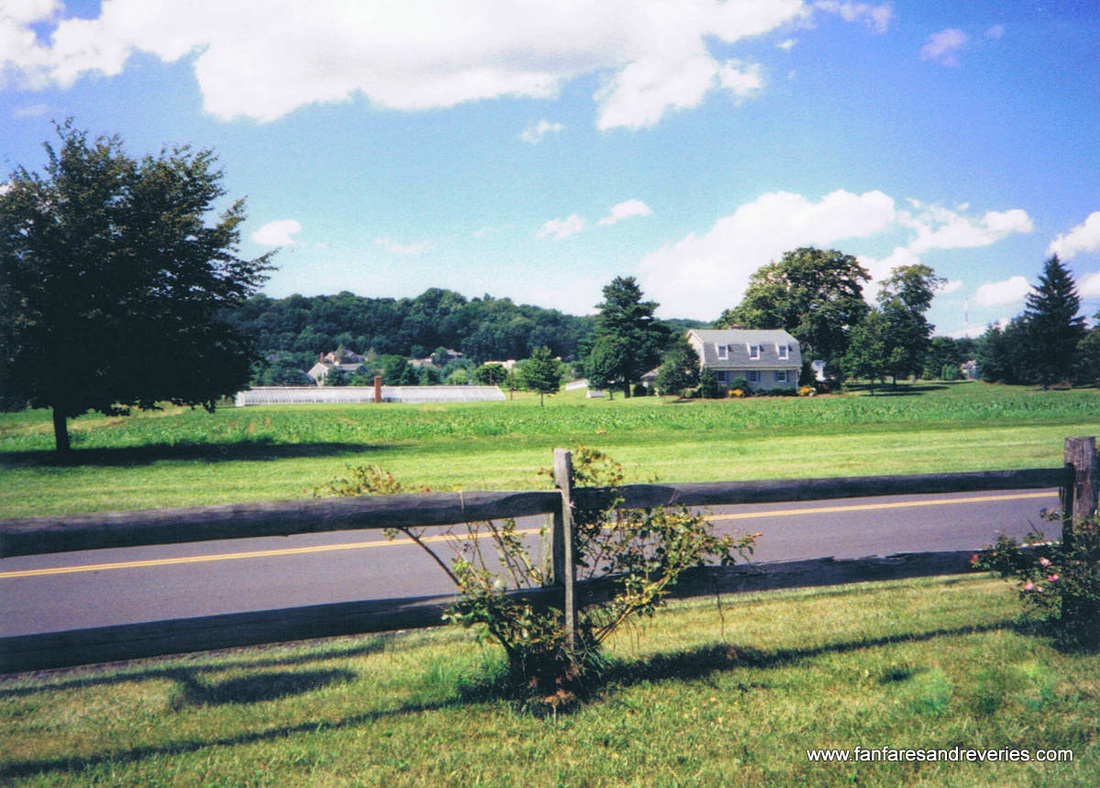 Along Washington Valley Road in Warren, New Jersey. This area features some of the nicest rural roads in the Garden State, although it has increasingly lost farmland to residential and commercial development over the years. In the Summer and Fall you can find fruit and vegetable stands which offer a fine assortment of country goods. 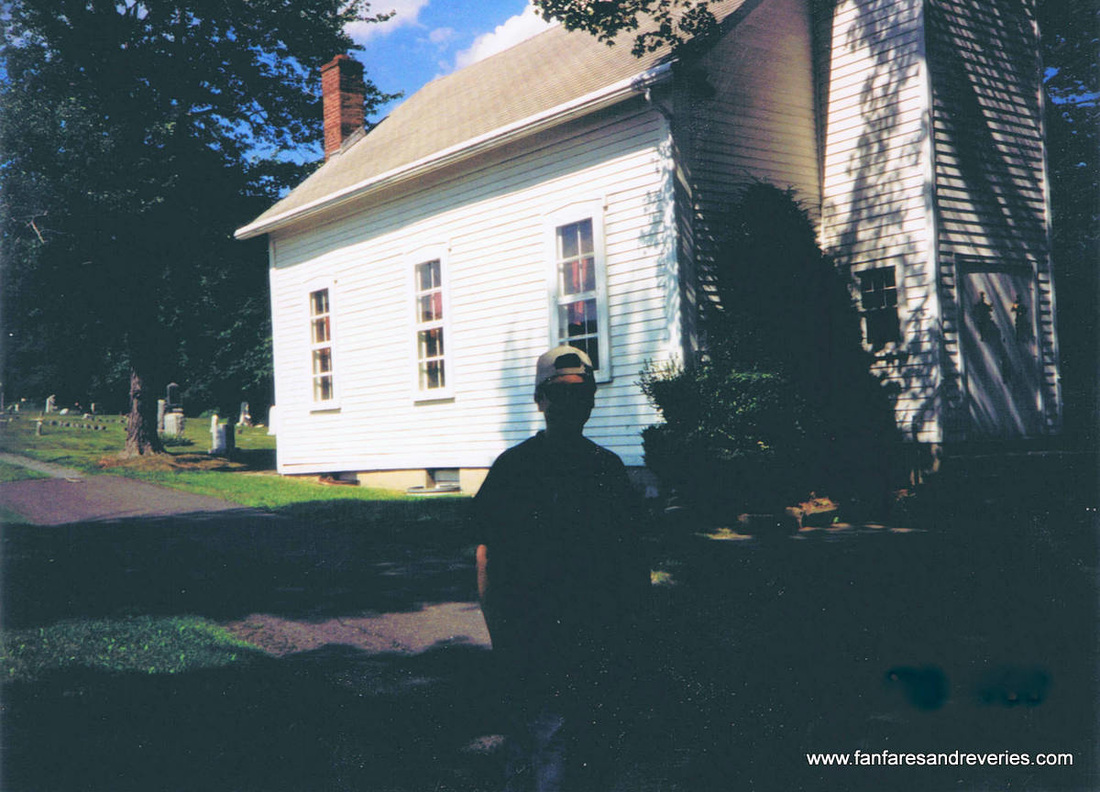 Springdale United Methodist Church, Warren, NJ. Building erected 1840-41, enlarged in 1894, with small bell tower added in 1904. This church stands at the intersection of Morning Glory Road and Washington Valley Road and still holds services for the local population. The land was originally bought in 1839. 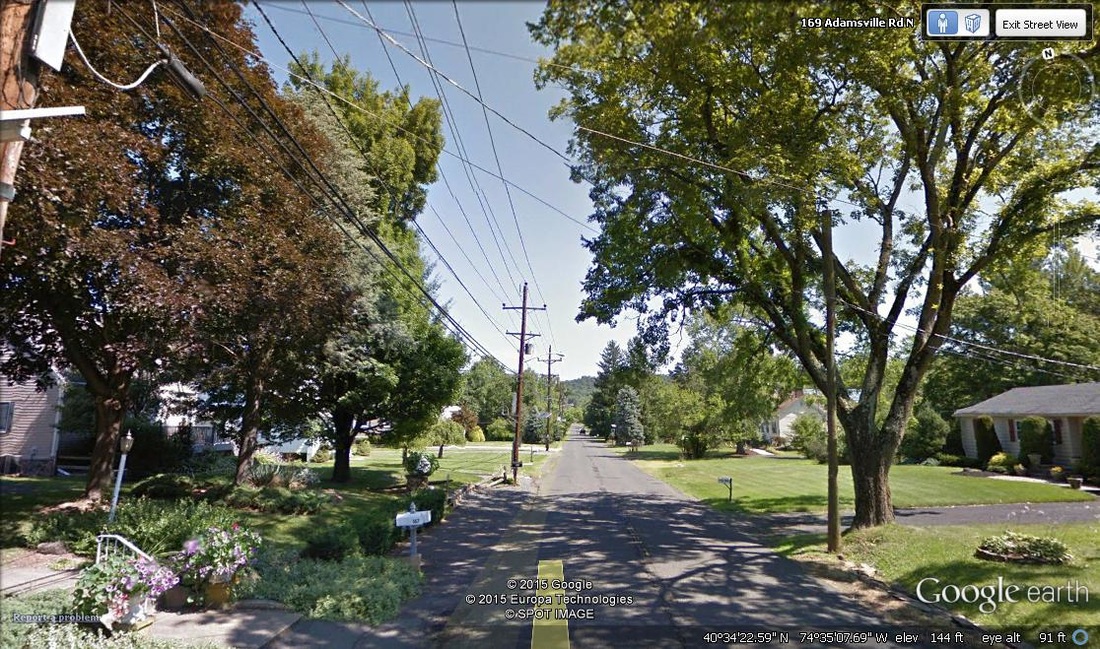 A Google Earth view of the distant Watchung Mountains at the north end of Adamsville Road in Bridgewater, New Jersey. This street is not far from where I often stopped to eat lunch at the Somerset Medical Center in Somerville while delivering the mail. The mountains make for a noble backdrop as you walk along the street and then notice their fascinating, looming presence. Lines to follow with your eyes! This is Part III of the recently posted series of improvisations entitled "Baltusrol Impressions." In this impressionistic piece, I am remembering some of the childhood experiences I enjoyed between 1955-1965 at the west end of Baltusrol Avenue while visiting my cousins in Springfield, New Jersey. This area is now completely urbanized, no longer featuring the extensive forest, stream, waterfalls and rocks which once stood where Route 24 presently stands. Traces of this kind of natural environment may still be seen at Briant Park to the northwest, Meisel Avenue Park to the south, or throughout South Mountain Reservation just outside of Millburn and South Orange. Watchung Reservation also exhibits similar characteristics. Part III continues the exploration of the Baltusrol Avenue environment, focusing upon the majesty of Winter, the icy splendor of the forest, the dance and swirl of snowflakes, and moments which I would call a seasonal symphony of grace. I remember the grand ice sculptures we once encountered, where the normally flowing waterfalls had frozen over in dozens of spectacular forms and shapes, like pieces of modern art strewn about on dazzling display. There also was a small pond which froze over and seemed hidden away in the rustic confines of the woods. Thousands of trees marked this area, signposts of a natural majesty which at times could take your breath away. The piece begins with a choral introduction at 00:10, celebrating our initiation of adventures within the forest realm. At 00:20 there is a song of prayer, an affirmation of life and a spirit of thankfulness. At 00:49 variations introduce us into the halls of this natural environment. At 1:56 there is an intimation of the grey, wintry majesty of the forest with the celestial sky above. At 02:16 there are hallmarks of children's games. A minor key section occurs at 02:54, where wistful remembrances paint a somber portrait. At 03:34 a dance enters the scene, reflective of the disparity between urban life and the natural environment. The conclusion of this dance occurs between 05:38 and 05:45, where there is a shift from the minor key back to the major. At 05:49 the triumphant theme returns, a hymn of praise in which I quote briefly from memory a small refrain from the great hymn "All Creatures of Our God and King." The return of joy occurs at 06:50, with dreams and a sense of happiness. At 07:24, a development of the noble theme transpires, with the grandeur of physical and spiritual sight and the fullness of expression taking form at 07:42. The last chordal section develops at 08:15, with the fundamental bass notes carrying the end of the day. Performed on my vintage 1950's Iorio accordion, an instrument with unique tonal capabilities, at times resembling the sonorities of a large pipe organ. As I play these improvisations, I can hear the sound of Cavaille-Coll in my mind, heart and spirit. My cousins Sharon and Kerry invited me to spend a week in Springfield, New Jersey at their spacious home along Baltusrol Avenue, a wonderful invitation back in the 1950's or 1960's. This was the beautiful home of my Aunt Lill and Uncle Dell, a place our family visited often for birthdays, anniversaries, outdoor picnics or Holidays like Christmas and New Year's Day. Sharon and Kerry asked if I had ever seen the forest and rocks and waterfalls at the end of the street where the trees became too numerous to count. I answered that I had never seen that area, whereupon they quickly gave me the grand tour and introduced me to the beauty of the forest. I think that this first impression must have occurred somewhere around 1955 when I was 8 years old. Many times we went there to disappear into the verdant vastness, imagining that the rocks were our forest fortress or lyrical, tree-lined palace. A gentle stream meandered through the woods, at times becoming a petite pond after churning through an incredible array of rocky formations. You could hold your hand in the water to feel the power and strength of the stream's consistent current. In the winter months, the snow and ice would cover the ground and almost bury the sound and active flow of the stream. Yet you could hear the water beneath the ice and sometimes spot areas where the water again surfaced from the icy crust above. It was a kind of paradise for us, a place where the seasons could be measured in textures, colors, sounds and earthy fragrance. My cousins invited me to attend Springfield's "Strawberry Festival" in the warmer months, held at the spacious grounds of Jonathan Dayton High School. When we had occasion to visit the forest again, the impressions struck the senses with renewed impact. My father helped to remodel my aunt and uncle's house by converting the old kitchen into a dining room and extending the kitchen into a newly constructed room at the back of the house. I helped to lay the tile in the dining room, and felt completely at home in this attractive and well-appointed residence. In the winter months we enjoyed the fireplace, in the summer months we loved the backyard and the gathering of relatives. If my cousins had not invited me to see the forest, I never would have known it was there. To them I owe a debt of gratitude. The word "vicarious" comes into play: "Felt or undergone as if one were taking part in the experience or feelings of another." My cousins drew me to a place which they found to be enormously beautiful. I quickly agreed with them and acknowledged their willingness to share such a delightful natural treasure. The joy of others can profoundly impact the drift of our lives and re-arrange the pattern of our experience. What once was obscure or unknown to me became a place of refuge and a signpost of my youth. It would of course be a great blessing to hear this improvisation on a large pipe organ, but the accordion is all I have. So I have tried to make the best use of it, recorded on a Canon SD 1000 digital camera. Currently I am using a better camera, a Sony DSC RX100. The last time I saw the forest was probably in 1965, but I remember this place so distinctly and with great detail. I remember my dad telling me in the late 1950's or early 1960's that the highway system possibly would be expanded and the forest removed along with the waterfalls and rocks. Some of us thought that surely something would be preserved, but that was not possible apparently. Today you would not know that anything like a forest was ever there. But through the gift of music, I can still visit that woodsy landscape and take delight in the pleasures of a now forgotten forest. 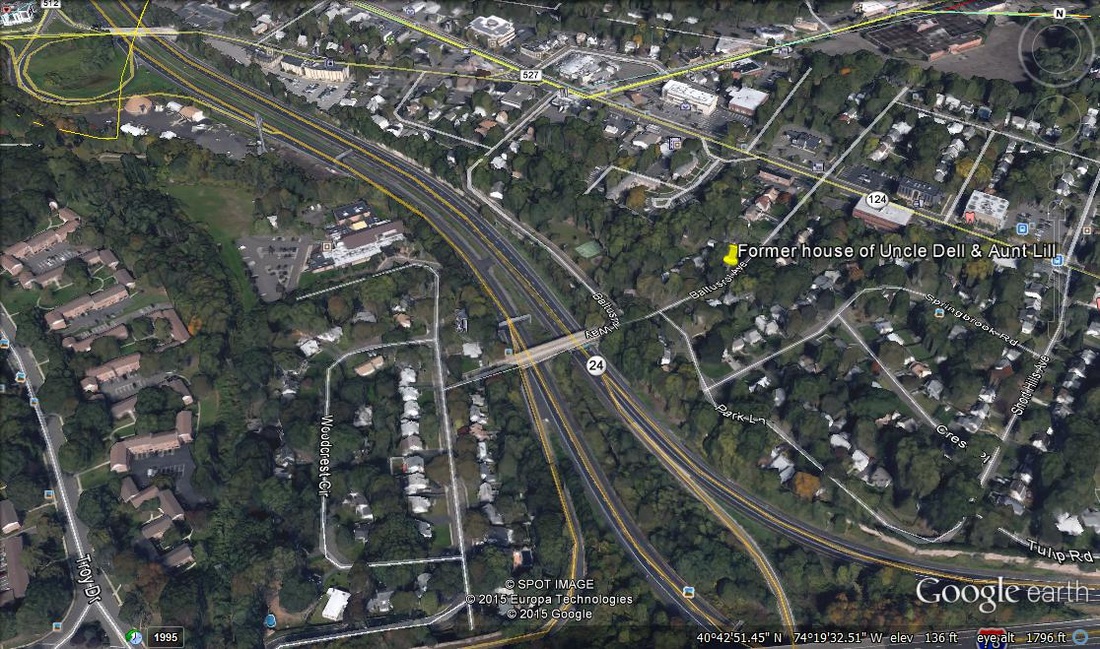 Aerial view from Google Maps which shows present day Baltusrol Avenue in Springfield, New Jersey. The yellow marker shows where my aunt and uncle's house stood, and the area in the central portion of the photo shows where the forest once stood. From a Joni Mitchell song: "You don't know what you've got till it's gone!" 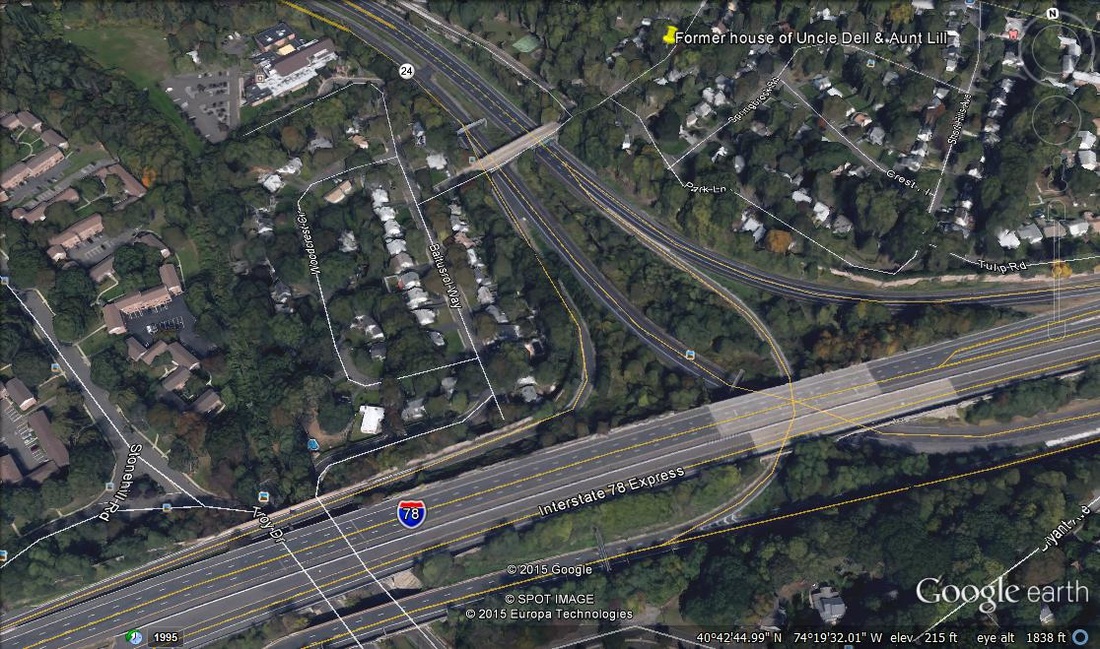 Another Google Maps image showing present day Baltusrol Avenue in Springfield, New Jersey. As Baltusrol extends westward, this is the area where the forest once stood, even extending down to where highway 78 now exists. Highway 24 now has overtaken this area. From Joni Mitchell: "They paved paradise and put up a parking lot!" I believe that construction took place around 1970 or thereafter. I don't think that Baltusrol Way or Woodcrest Circle were there in the Fifties or Sixties, and I don't remember Troy Drive or Stonehill Road being there either. Of course, my memory could be mistaken. I remember 1967 as a fascinating year spent in the Art Department of Drew University at Madison, New Jersey. That year I did some artwork for WERD, the college radio station and also published some pen and ink drawings in "Columns," the college literary magazine. Mary E. Davies acted as Editor-in-Chief for the magazine and provided great encouragement regarding the inclusion of pen & ink drawings for the Fall/ Winter 1967-1968 issue. My friend and fellow artist Regina Schwartzman created some lovely graphics for the magazine's cover. There were many concerts occurring throughout the year and somehow I was asked to design some trendy, eye-catching posters to advertise the upcoming events. One such concert was this one with harpsichordist Robert Smith, for which I still have the original artwork as shown here. I recall another concert poster which featured some modern art graphics in the shape of a guitar or stringed instrument, but sadly that artwork was stolen just before I was able to retrieve it from the bulletin board at the University Center. At least I was able to save this particular piece for my own collection. In the lower left corner are the initials "M. W." indicating that the Center approved the artwork for posting on the announcement board. Someone at the time hinted that this may indeed be the signature of Martha Washington, but I remain somewhat unconvinced of that particular claim. Bowne Lecture Hall was originally built in the 1920's or 30's as a gymnasium with a large pool in the basement area. Athletic Coach Harry Simester showed us the remnants of the pool area and gave us a tour of the building when we first arrived as new students on campus. The entire building was renovated as a concert hall with a spacious main hall, a large second story balcony, and a pretty impressive stage up front. I think that Drew eventually allowed the New Jersey Shakespeare Company to perform there on a regular basis. As I have not been back to the campus since graduation in 1970, I am not sure how the building is presently used. I went to the Drew Library to find some photographs featuring the interiors of the great cathedrals of Europe. There were many examples and I found several that I wished to emulate in their ornate beauty and splendor of architectural detail. For this drawing I chose an elaborately decorative ornamental gate leading to the interior where the pipe organ sits aloft in the background. The perspective leads the viewer's eye into the interior, allowing for the height of the ceiling to display some of the required details as well as providing some artistic development suitable to the overall scene. The clock is set at 4:00 PM afternoon time, perfect for the shining sun to glorify the stained glass windows. 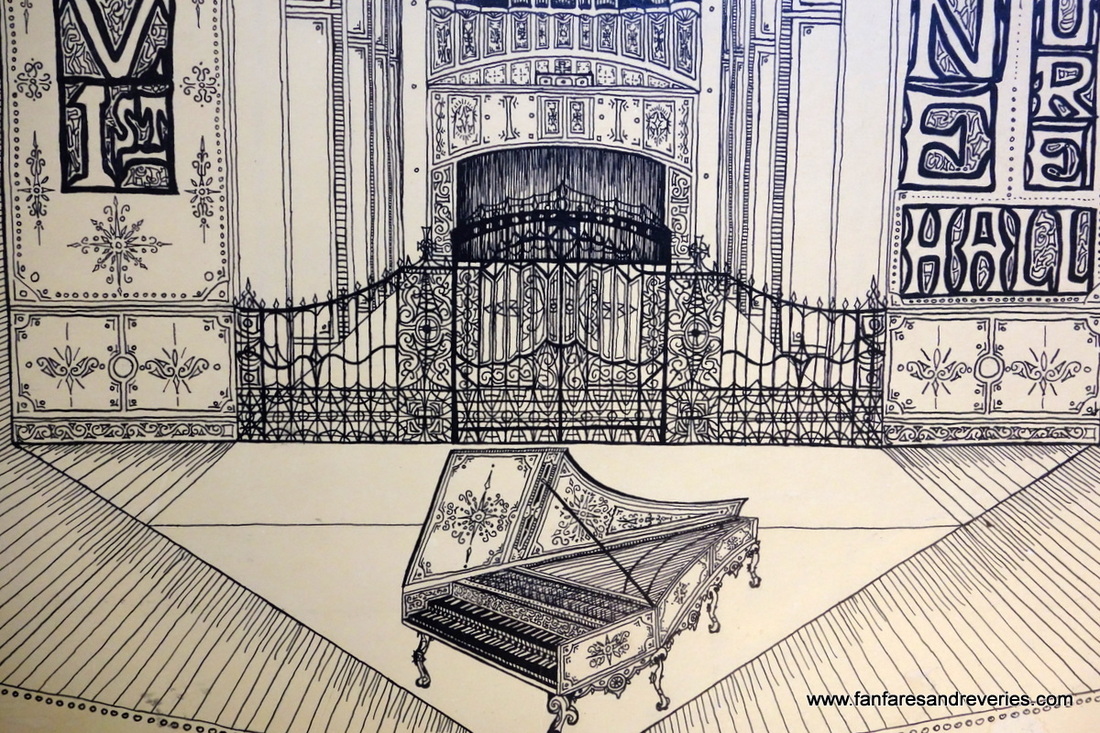 Pen & ink detail section, approximately 10" x 7", showing the harpsichord in front of the ornamental gate. I found a nice selection of books illustrating musical instruments, but my pen was unable to articulate the full detail needed for the keyboard. So one must use a bit of imagination to envision a real harpsichord on stage. Accordion Impressions: Along a Country Road An improvisation reflecting upon memories of a day hike along Possumtown Road in Piscataway Township, New Jersey in 1958 or 1959. My friend Bobby and I were Cub Scouts invited by the local Scoutmaster to attend a day hike with about 8 or 10 other Scouts along one of the country roads in rural New Jersey. We started out early in the morning on either a sunny Spring or Summer's day, traveling south to Cedar Avenue by crossing the railroad tracks of the Jersey Central and Erie Lackawanna lines and following the rural road to Possumtown Road where we began to travel eastwards along a two-lane country road heavily surrounded by densely wooded forests. It was a clear and breath-taking morning, dotted with wonderfully colorful scenes and crisp aromas of the country outdoors. We walked beneath a railroad overpass made of stone and steel and then continued our adventurous trek down this lovely country lane. Here and there were simple fields dotted with wildflowers, filled with butterflies, sometimes adjacent to crops and rows of tall corn bordered by tall weeds and the tangles of nature. We took great delight in the fabulous adventure of the day, enjoying the sights, sometimes slowing our pace to take in the abundant details spread so enchantingly before our impressionable eyes and senses. Across from an old stone house, someone had tied a small goat to a metal post. The little fellow greeted us with warm affection and we tarried just a moment to pet him and admire his quaint hideaway tucked next to the verdant wilderness. Somewhere down along the road, our leader asked us to pause and find a place to eat our lunches in the vicinity of a beautifully still pond strewn with rocks and green ferns. We took a well-deserved rest and enjoyed our hand-packed lunches, admiring the quiet stream and feeling the full nourishment of both the food and the spirit of the moment. When the time came to leave, we headed back the same way we had entered this lyrical domain, looking forward to begin our trek homewards and to share our adventures with our respective families. Today this area has been substantially changed, although Possumtown Road is still there in a four-lane version with a small length of the original two-lane design left in place. Now the vicinity is populated by light industrial buildings, commercial factories, parking lots and condominiums, all bordered by the fast-moving freeway known as Highway 287. There are some thickly wooded pockets of forest still situated along Possumtown Road, along with the remnants of a small pond and a nicely landscaped park. But the two-lane country road which we once traversed has been radically altered, probably no longer to be recognized through modern eyes.
Program notes: The opening theme begins at 00:14 and is quickly followed by a development section, continuing with still more development at 00:52 and the shift to stronger bass and a stirring sense of majesty at 01:26. The full master register sounds at 02:00 with a brief coda at 02:22. At 02:23 a quieter episode begins with the bassoon register, then the clarinet register at 02:44, leading to another quiet closing figure at 03:06. At 03:08 the violin register speaks, then the musette voice and a repeated development section. Further development takes place at 03:51, with the bassoon register bringing forth the lower notes in the treble section at 04:07 and a "walking bass" phrase displayed via the bass section. At 04:25 an introspective portion ascends to the fore, with the full master again introducing the original theme and development at 04:40. At 05:03 there is an impressionistic portrayal of climbing notes, as if one is reaching, walking, dreaming and marching all in continuous order. The ending portion begins at 05:21 with the closing chord heard at 05:31 until the final sounds fade away. Performed upon my vintage 1950's Scandalli accordion, a 4/5 reed instrument in LMMH configuration. The keyboard length is 17 inches. This accordion was given to me as a gift from friends around the year 2000. USA and Canada Copyright Disclaimer Under Section 107 of the Copyright Act of 1976, allowance is made for fair use for purposes such as criticism, comment, news reporting, teaching, scholarship, and research. Fair use is a use permitted by copyright statute that might otherwise be infringing. Non-profit, educational or personal use tips the balance in favor of fair use. This video is made solely for the purpose of study, review or critical analysis purposes only. I call this "Painting with Reeds" because I love the evocative sounds of these vintage Italian reeds. In the same way an artist would paint with a full range of impressionistic colors or in an impressionistic style, I find that the reed voices of a good accordion are capable of creating an atmospheric environment readily descriptive of an event, a person, a time, a mood, a specific setting or a range of ideas. 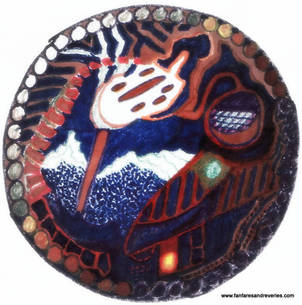 Pen & ink, 3" diameter, G. Tompkins Pen & ink, 3" diameter, G. Tompkins Journeys & Visions Along the Urban Landscape Often we encounter glimpses of things which might ordinarily escape our notice. In the 1960's I frequently traveled via the Jersey Central Railroad to Newark from the station at Dunellen on my way to New York City. As you approach the more densely populated areas, one notices a more commercial, urbanized landscape and fewer pockets of picturesque trees. Yet I distinctly remember gazing dreamily northwards from the windows of the eastward-bound train as I prepared for a day in the City. To Gauge the Map of Tracks, Trees & Hills As you approach Plainfield, there is a point somewhere in the vicinity of Leland Avenue which affords an expansive view to the north. On one eventful train trip many years ago, I just happened to casually glance in this direction and noticed a spectacular sight which I had never seen before. Just overhead from the dense pocket of trees to the north, in the distance I could discern a beautiful building shining in the early morning sun. It was on the southern side of one of the Watchung Hills, looking like a magnificent palace, a stone castle or royal chateau. As the train crosses Terrill Road, you can still see this building quite clearly, but the image fades as you edge toward Martine Avenue, eventually dropping from sight as you approach Westfield Road. This view lasts only a brief moment on the moving train, then vanishes altogether, not to be seen again until the long homeward-bound journey. A Vision Upon the Watchung Hills The beautiful building within sight of the train is known as Mount Saint Mary Academy, an independent school which offers a college preparatory program for young women, 9th through 12th grade. Situated in Watchung, just north of Plainfield along Route 22, the Academy is under the direction of the Sisters of Mercy of the Mid-Atlantic. The first building to house the Academy was erected in 1908, unfortunately destroyed by fire in 1911. The new building (the present structure) was rebuilt in 1912, featuring a prominent bell tower with the inscription "Gratias Agamus Domino Deo Nostro," (We give thanks to God). Whenever I had occasion to travel via the Jersey Central, I would earnestly look northwards to see if I could spot the bell tower and the imposing facade of this magnificent building. On certain days, if the weather was overcast and grey with slight rain or fog, you might totally miss the vision upon the hill and the grounds adjacent to the Academy. If the trees seemed to grow somewhat taller, the view could be completely cut off and suspended from sight. Sometimes you really had to search the horizon or you might miss the occasion in a matter of moments. Andante pastorale from Symphony No. 3 by Composer Carl Nielsen (1865-1931) There is a passage in this remarkable symphony (FS 60, Op. 27 "Sinfonia espansiva," composed in 1910-11) where two soloists enter the second movement and sing wordlessly in the "Ah" vowel, echoing one another and sounding profoundly beautiful together amidst the splendor of the orchestra. These two voices seemingly appear out of nowhere and rise to glorious heights of harmonious expression, drawing the listener in toward one of the most transcendent moments in all of Classical music. I find this music to be thrilling and resplendent in an all-encompassing manner, especially in the version offered by Dacapo with Michael Schonwandt conducting the Danish National Radio Symphony Orchestra. In this performance, Inger Dam-Jensen sings the soprano part and Poul Elming the tenor part, recorded in cooperation with Danmarks Radio. (This recording is also available on Naxos.) A Brief But Glorious View The second movement of Nielsen's 3rd Symphony illustrates how a moment of divine music may inspire us in an extraordinary and long-lived manner. It is just a brief interlude in the overall structure of the Symphony, a passage which Nielsen refers to as "the purest idyll." Yet this passage reflects a visionary summit peak, a moment where voices soar wordlessly over the enchantment of the symphony orchestra. It is a reminder of the art of perspective, a vital reflection of looking upward and outward and noticing something we might have previously missed. From the train to a brief vision of the mountainside Academy, from a momentary passage in music, or from the written notes of Carl Nielsen regarding his Symphony, we may each engage "...a certain expansive happiness about being able to participate in the work of life and the day and to see activity and ability manifested on all sides around us." 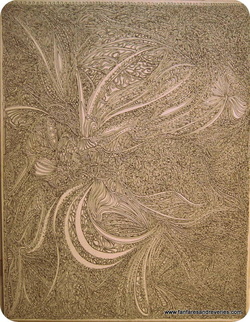 Pen & ink, 15"x19", G. Tompkins Pen & ink, 15"x19", G. Tompkins A Journey Across An Imaginative Landscape In the late 1960's I often had occasion to travel via the Jersey Central Railroad from the Dunellen train station all the way to Newark, traversing the Hudson Tubes and eventually arriving at New York City. As an Art student enrolled in the New York Art Semester at Drew University, I was expected to visit museums and galleries, engage in class field trips to meet artists in their studio environments, and to keep a noteworthy journal of my thoughts, perceptions and observations. The Jersey Central provided a convenient method of commuting to NYC and I quickly became fond of train travel as an alternative to taking a car or bus to the City. The route began in Dunellen, traveled through Plainfield, Fanwood, Scotch Plains, Westfield, Garwood, and Cranford, finally reaching the great train station at Newark, a place of enormous overhead structures and miles of parallel tracks packed with passenger trains. The View From a Train Window There occurs a brief moment as you leave the train station at Fanwood heading East where the tracks curve slightly to the right and the train allows a view into the backyards of some vintage homes clustered along a stretch of wooded parcels of land to the North of the tracks. At this point the train seems to be at a somewhat higher elevation, perhaps as much as 10 feet higher than the backyards of the homes, giving the effect of looking downwards into a miniature canyon or autumnal valley. Just at this juncture of time and space, I would remember the lines from one of the songs by Judy Collins on her 1967 album "Wildflowers," a critically acclaimed album arranged and conducted by Joshua Rifkin. All of the songs on that recording are gems, but the one which keeps coming back to me is entitled "Albatross," one of the most beautiful works of art which Judy ever recorded. The first lines read, "The lady comes to the gate dressed in lavender and leather...," a poetic entry into a visual field of splendor. The song continues, "...She hears the steeple bells ringing through the orchard all the way from town." I do not remember if there were any gates that could be seen from the train windows, but there were certainly plenty of places that a gate might provide a beautiful entryway into these lovely homes with their petite backyards. Similarly one could occasionally view a church steeple briefly at some distance from the tracks, or imagine the bells heard in each neighborhood, or envision the neat topography of land laid out from the town center to the small wooded parcels dotted along the train tracks. A Poetic Song with Evocative Images Judy's song continues with vibrantly resonant language, pinpointing the grandeur of the human landscape as well as the natural landscape. "Many people wander up the hills from all around you, making up your memories and thinking they have found you." As I peer through the train windows I begin to see the history of the moment and the pattern of the events and the people in my life. From station to station, from track to track, from city to city....these thoughts and perceptions become the dialogues of a young art student transformed via time and the ongoing process of maturity. Judy speaks of "the embroidery of life" and then paints a picture which becomes indelibly etched in my artistic heart and mind. "...And in the night the iron wheels rolling through the rain, down the hills through the long grass to the sea." Joshua Rifkin's arrangement and orchestral conducting soar with an affinity for Judy's lovely voice during this powerful passage. There is a rise and fall of evocative feeling in this special music, conjuring images which remain impressively vivid. Final Impressions Judy's song "Albatross" closes with some perceptive observations on the continuity of life. "Day and night and day again, and people come and go away forever." Who hasn't reflected upon our days of schooling or early family life or days spent working or travelling or interacting with others via relationships? Wave upon wave of events may occur as cycles existing in time, like the train excursions via the Jersey Central, peering out the train windows and recording the impressions one may encounter or visualize along the way. Then in the closing lines to the song, Judy so eloquently, so elegantly, quietly recites a marvelously resonant and poetic message, "Come away alone, ...come away alone....with me." This is the memorable language of love, a time and a place which can be viewed as a tender invitation, a noble passage, an everlasting entrance or an eternal gate. 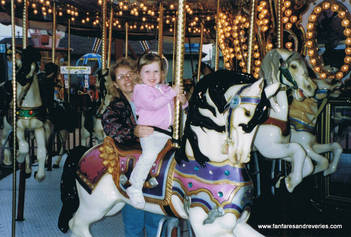 The Carousel at Long Beach Island, NJ. The Carousel at Long Beach Island, NJ. The Carousel at the New York 1964-65 World's Fair In 1964 and 1965 I attended the New York World's Fair with a couple of my friends from New Jersey, taking a bus and then the subway train to Flushing Meadows in Queens, NY. We marveled at the incredible variety of pavilions and international exhibits at the Fair and took in the fabulous sights along the adventures of the day. One of my favorite places at this event was called Carousel Park at the Lake Amusement Area, a unique site dedicated to the showcasing of a rather beautiful vintage carousel & band organ. The carousel had been assembled from two different structures, a frame built by William F. Mangels for the 1908 Stubbman's Beer Garden Carousel at Coney Island, and masterfully carved horses from Charles Feltman's 1903 Carousel also originally from Coney Island. A Work of Art & Rare Examples of the Woodcarver's Craft Feltman's horses were simply splendid specimens of a rare & imaginative art, including 71 horses, 1 giraffe, and 2 chariots decorated and hand-carved with exuberant flair and consummate skill. The horses and other animals were the handiwork of Marcus Charles Illions, a master-carver who had trained at Walter Savage's London wood-carving shop. All of these horses and animals were mated to the William F. Mangels frame, the original 1908 Stubbman's structure which had been rebuilt in 1923. Military Band Organs & Their Joyous Projection of Sounds Two military band organs were installed at Carousel Park to provide music for this historically preserved merry-go-round. The Valdkirch was manufactured by the Gabebruder Organ Fabrik in Germany and featured 450 reeds along with woodwind & brass sections. An on-location recording made by Quote Records featured some of the fabulous music offered by these impressive mechanical marvels. Some of the selections offered on this LP album are "Brother Can You Spare a Dime," a couple of waltzes & marches, "In Apple Blossom Time," "Over the Waves," "Light Cavalry Overture," "Sweetheart, Sweetheart," "Beer Barrel Polka," and Rossini's "Una Voce Poco Fa." In this rather atmospheric recording you can occasionally hear an airplane fly overhead and a couple of workman's voices apparently captured by the open microphones. On a good stereo system you can crank up the volume and momentarily relive the the power and joyous projection of these marvelous instruments. Present Day Location of the 1964-65 NY World's Fair Carousel A permanent home for this carousel was established at Flushing Meadows/ Corona Park in 1968. A restoration project was begun in 2012 to last the next 10 years. The location is now known as Fantasy Forest with the carousel taking the place of honor in the present Park's magnificently preserved space and design. May riders of all ages continue to savor the beauty of the dazzling lights, the thrill of the regal steeds and the majesty of the band organ's resonant reeds. 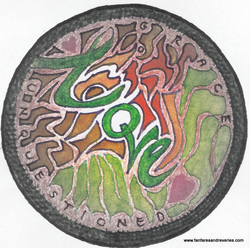 "Love," pen and ink, artist: G. Tompkins "Love," pen and ink, artist: G. Tompkins Visions & Memories From Storied Amusement Parks Liberty at Olympic Park in Irvington/ Maplewood, New Jersey The carousel at Olympic Park was named Liberty and quickly became my favorite merry-go-round, one of the primary joys of my early childhood. The Philadelphia Toboggan Co. assembled this carousel in 1914, a masterpiece of the wood-carver's art matched to a European band organ which played delightful marches, popular melodies and light Classical pieces. Liberty served from 1929 until 1965 when Olympic finally closed its doors after completing its final season. This carousel was housed in a beautifully constructed wooden pavilion which sported many small windows and a set of large entry doors. The large enclosure area inside the pavilion allowed the music to reverberate and resonate amidst the tall wooden rafters, imparting a sense of extravagantly delightful music emanating from a spacious concert hall. The sense of light was almost overwhelming to the visual eye, with thousands of brightly lit bulbs decorating Liberty's impressive exterior. There were paintings and colorful decorations in the inner portion of the carousel and also completely surrounding the upper portion of the superstructure. The horses themselves were marvels to behold, shining steeds in bright and fabulous hues, offering a staggering array of reigns and saddles and decorative accouterments. Perhaps the most endearing feature of Liberty was its fabulous band organ, a magnificently carved and decorated mechanical musical instrument which played fantastic tunes along with percussion accompaniment and miniature dancers. I always drew as close as I could to feel the brilliant vibrations sounding forth from the rhythmic music, sensing each brush of the cymbal and the thundering power of the bass and snare drums. This was high-spirited music which lifted the listener up to extraordinary realms of palpable joy. |
Author
|
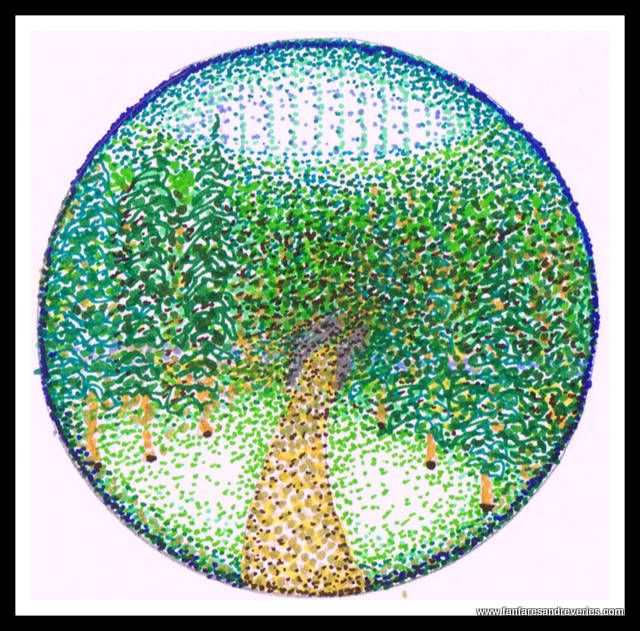
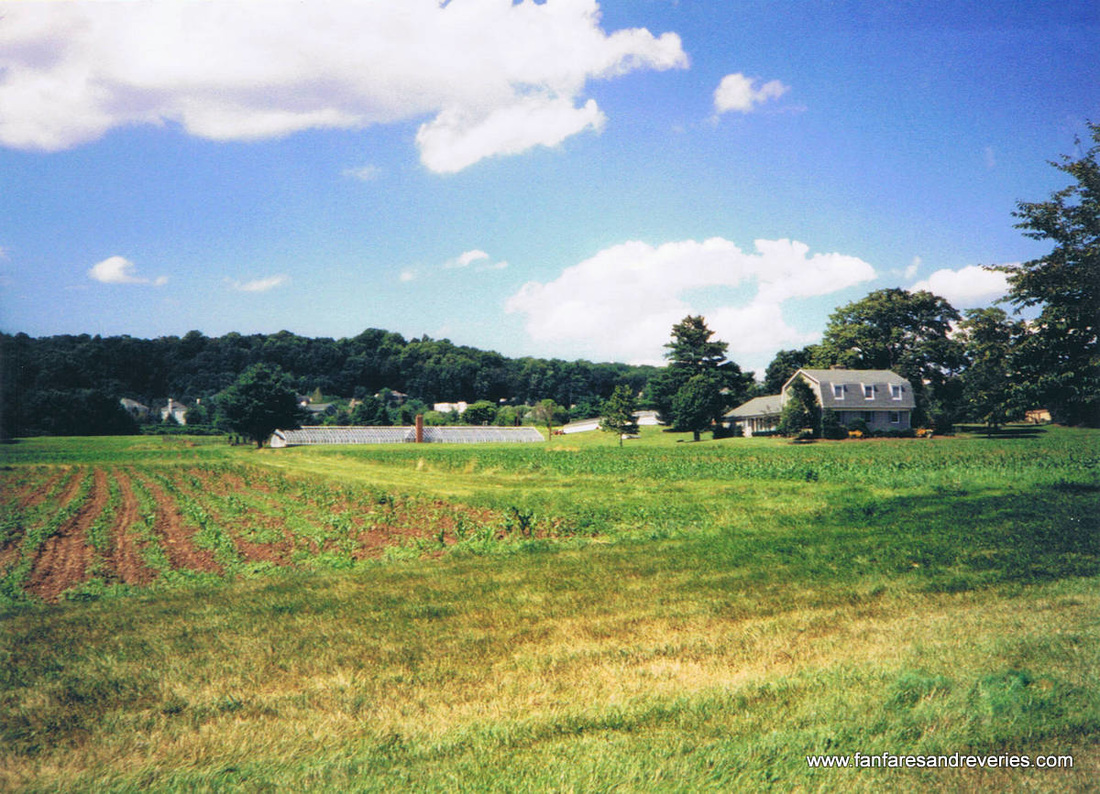
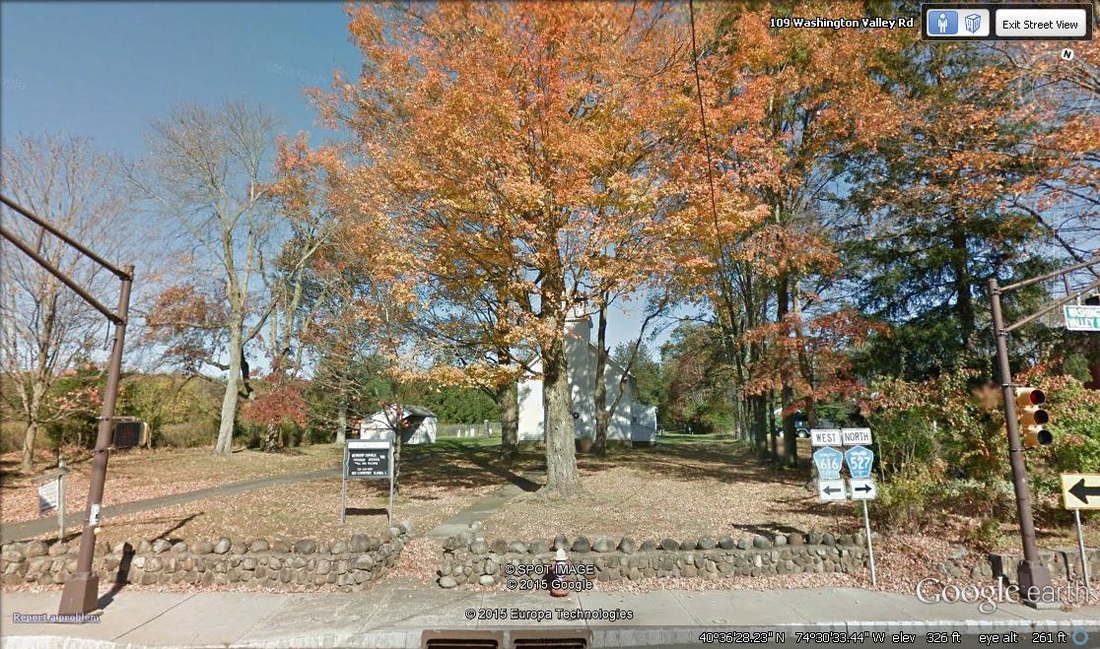
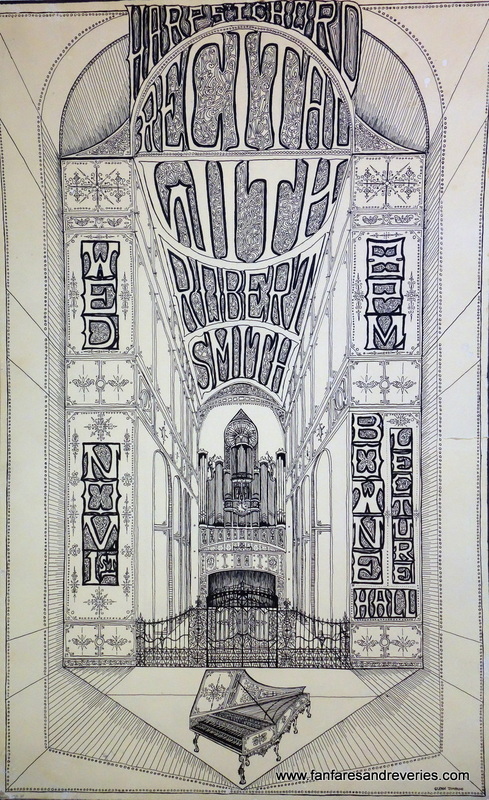
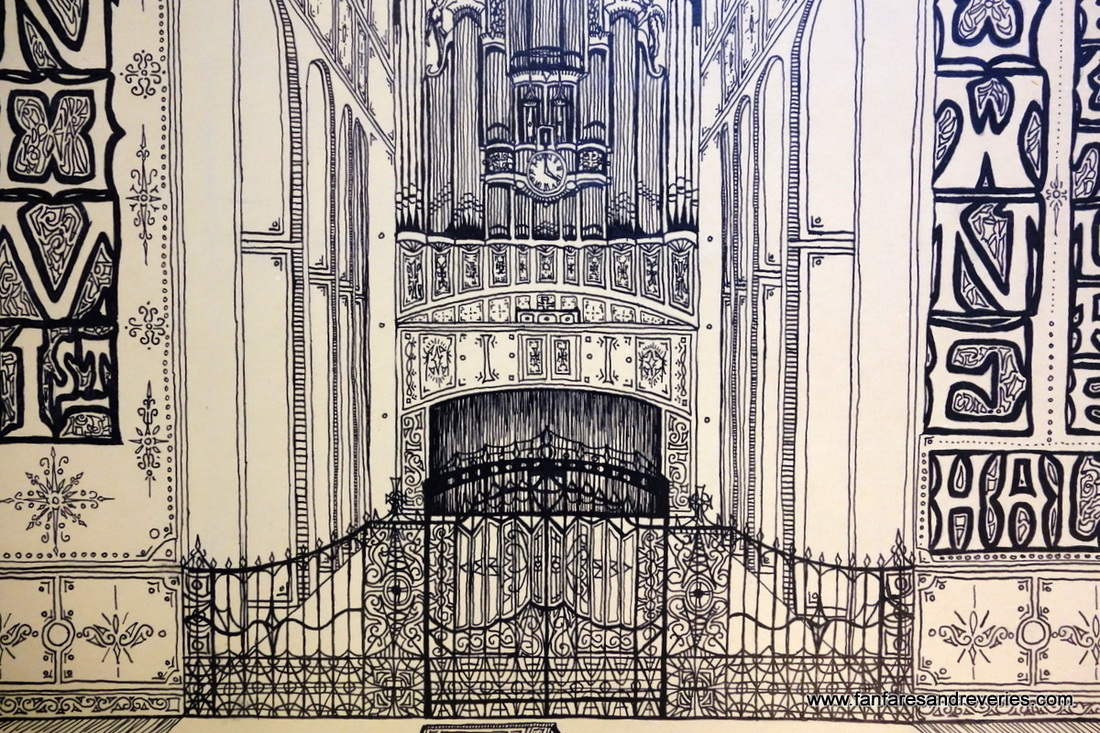
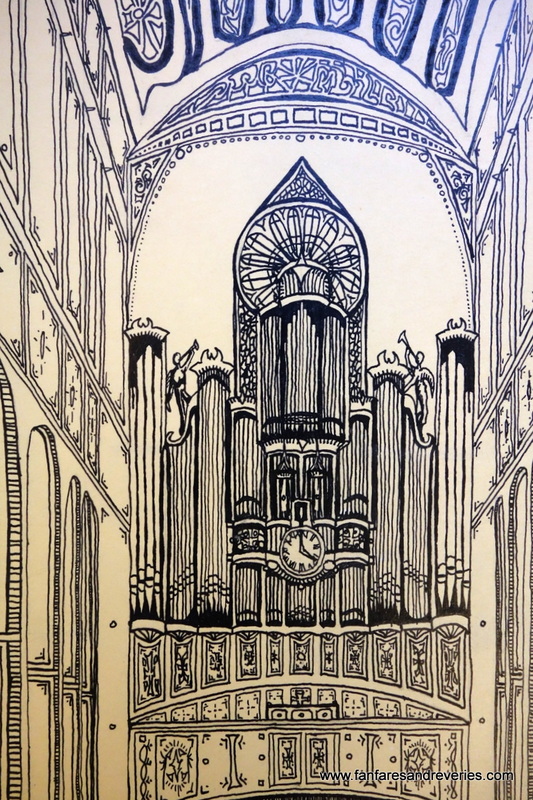
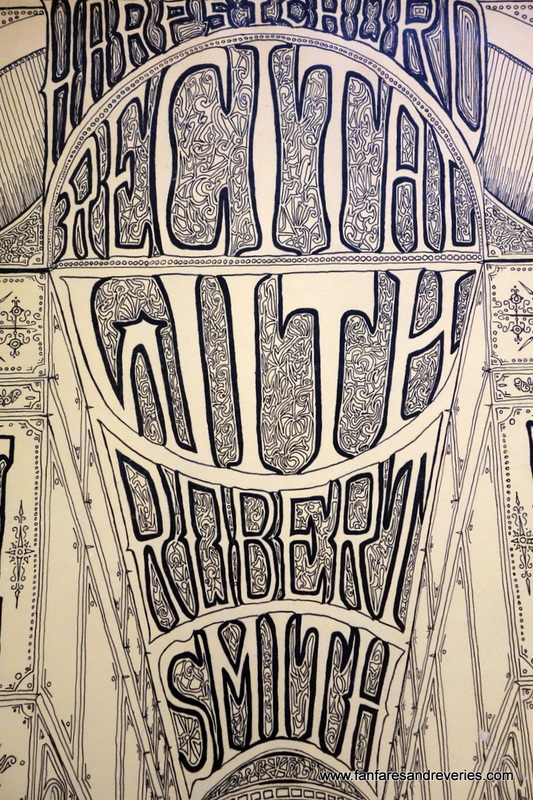
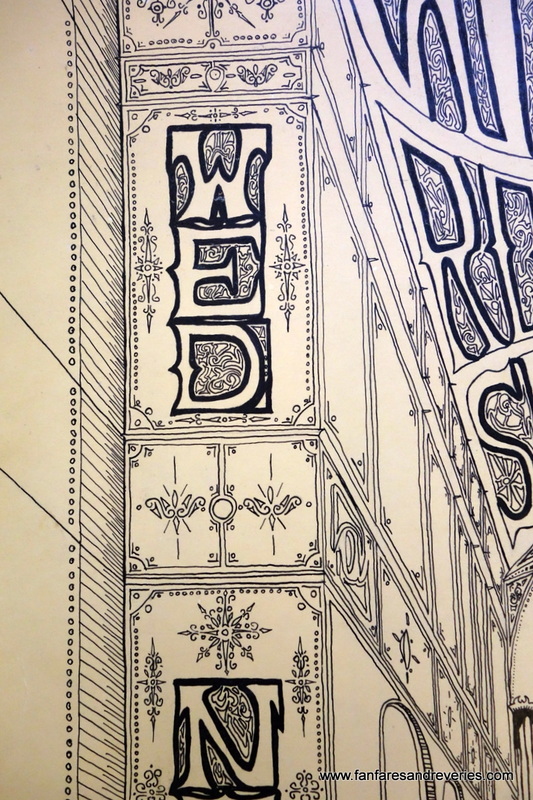
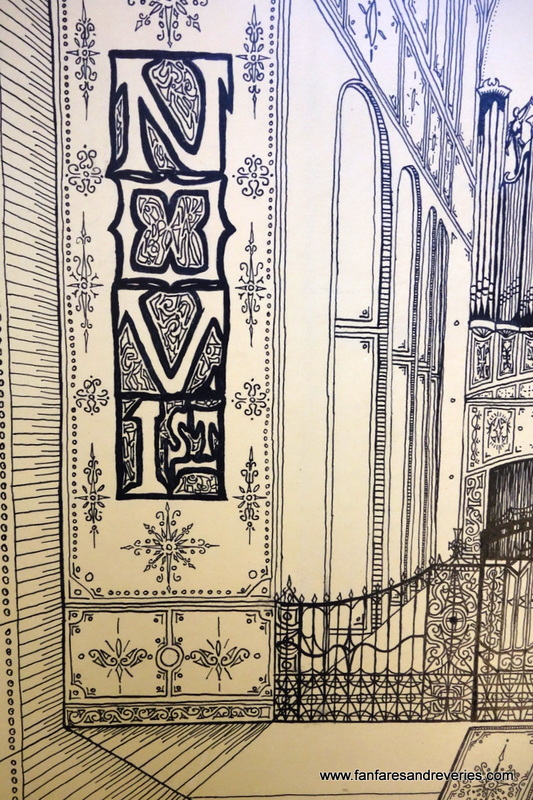
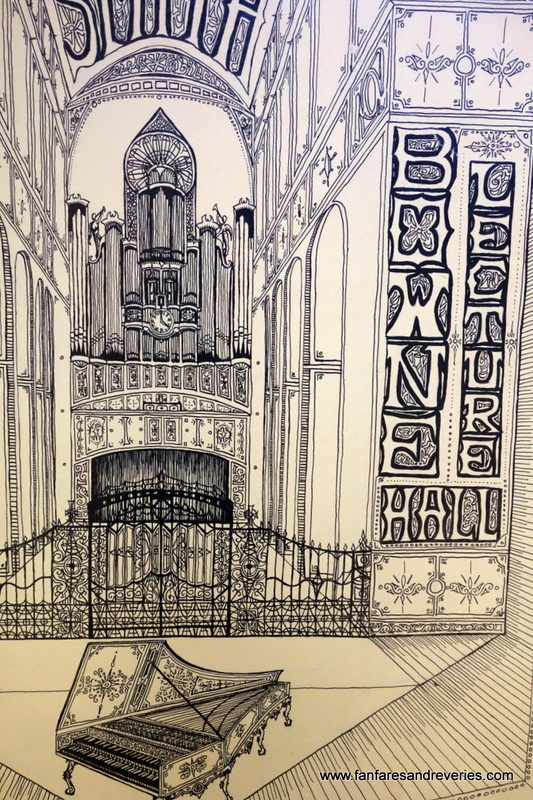
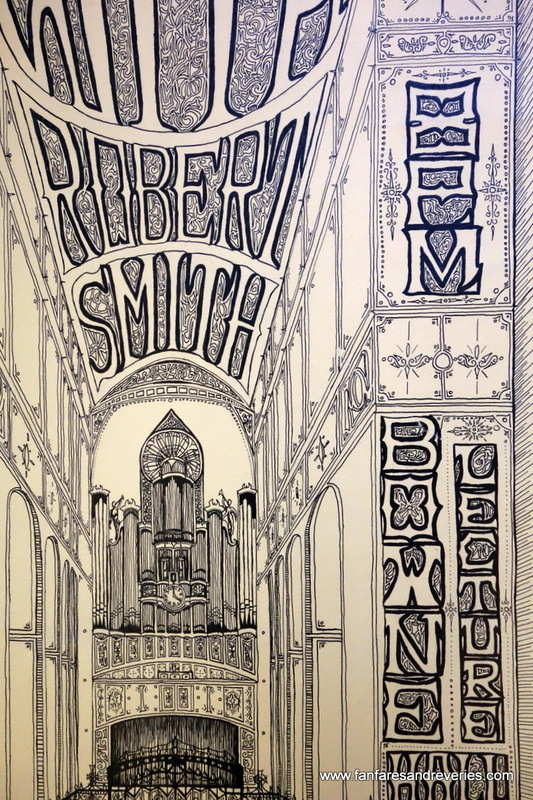
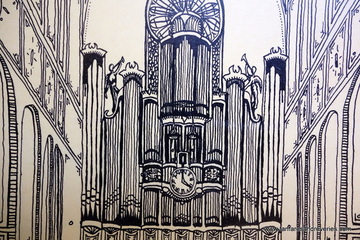
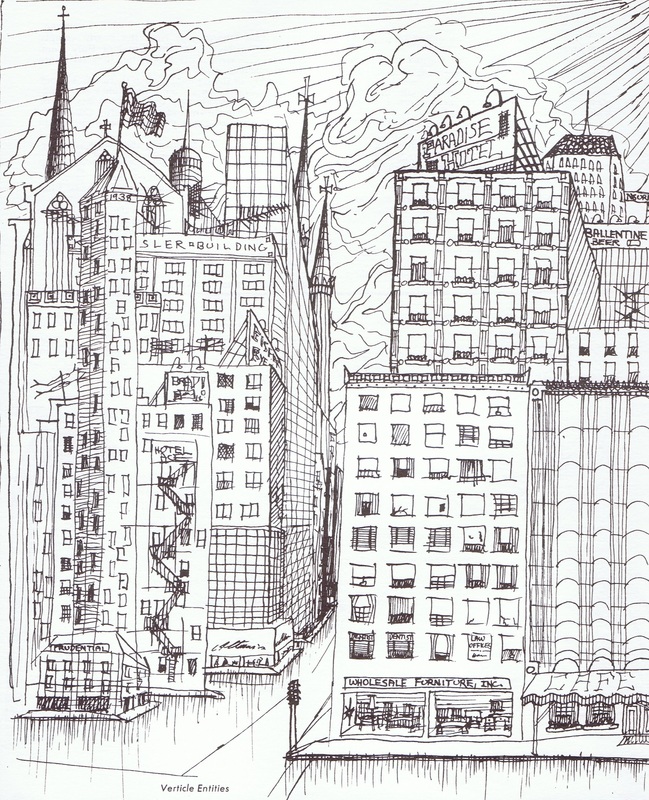
 RSS Feed
RSS Feed